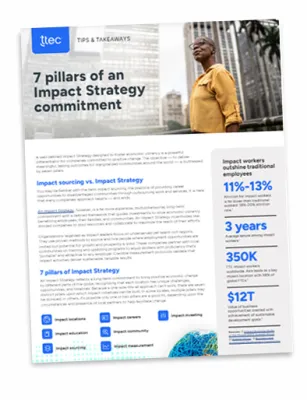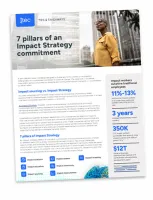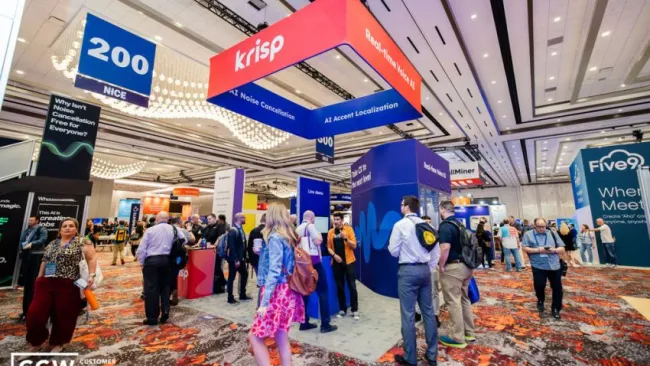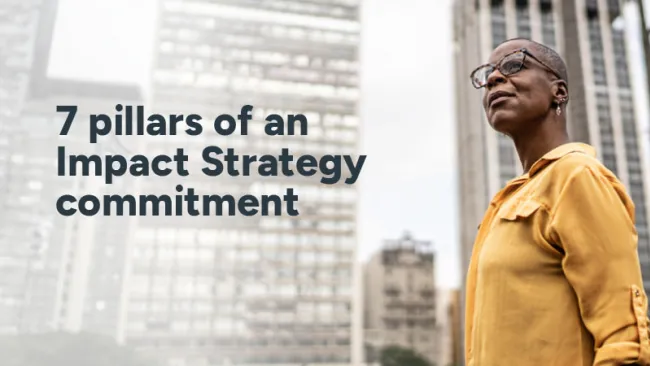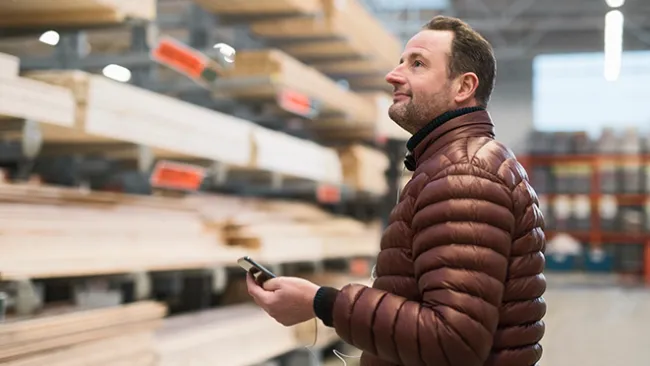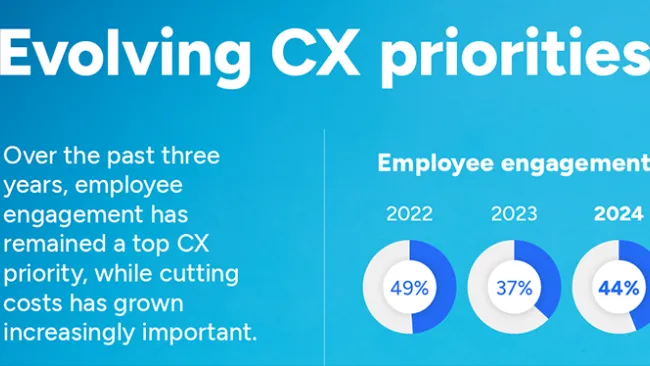Anyone working in the contact center space knows that finding and engaging top-performing front-line employees is a challenge. Companies are hard pressed to attract and retain customer care workers in the midst of low unemployment rates, expanding competition, and changing expectations from potential staff about what they want in a workplace environment.
A strategic use of human resources can be the secret weapon to help a company stand out among competitors. Data-focused strategies and a commitment to new ways of engaging employees help firms get, keep, and grow the best customer support talent, which leads to the best customer experiences.
We recently interviewed TTEC human resources leaders Michael Wellman, Judith Almendra, and DJ Valente about how they are overcoming employment obstacles and cultivating great customer support talent. Below is an excerpt of the conversation, and the full interview can be found on www.theCXPod.com.
What are you seeing in the labor market today? And why is it such a challenge?
Michael Wellman: It’s become a perfect storm. There is a new competitiveness in the market as it relates to talent and skills of the workforce and a higher demand for more qualified workers. Then there are wage pressures and supply-and-demand issues in different cities. This keeps intensifying and it’s harder to attract candidates. But then when you do attract them, how do you get employees committed long term?
DJ Valente: And there are a couple of other things that are really driving it. There’s one of the lowest unemployment rates in five decades—over 3.6 percent unemployment in the U.S. There are 7 million current active job openings today in the U.S., which is the highest in basically five decades. So I think when you combine that with the wage pressures and availability of labor, it’s a perfect storm for some of these tier 1 and tier 2 skill levels.
Judith Almendra: Technology has really revolutionized the way that consumers and candidates behave, as well. In a single interaction, you can actually have a candidate apply to multiple jobs at a time, and it’s much easier for them to fill out an application today on average. So that really adds to the competitive nature of the market. Candidates are more informed than ever in terms of the salaries that they should be making, and what options are available to them.
How is this changing your approach to the job and business?
MW: Across organizations, human resources and people strategy are the differentiators more than ever before. Data is probably at the top of the list as it relates to what is the true story of your workforce and the issues that need addressing to attract and retain employees. And last but not least, it’s about having a collaborative relationship not just internally, but externally with our clients and our colleagues that support organizations and other industries.
How can HR leverage data in new ways to help spur employee success?
MW: We have some standard reports that we look at as far as applicant flow and market data as it relates to how large of a market that we have to mine from. We look at daily reports of applicant numbers and hires, but we’re also assessing once somebody goes through the interview process and is hired. We measure every step of that process, from going into that permanent role to using real-time feedback to understand and respond quickly to issues that come up. And we’re able to look at trends around the applicant experience, but also the new employee experience.
JA: There is also a very strong partnership now between human capital and our insights side of the house to start connecting those dots from all the data that Michael mentioned, from applicant to labor market data. We look at external metrics as well as internal metrics and how those connect, which allows us to make more informed decisions about the propensity of someone to leave or stay in the organization. You can take proactive actions to retain that individual and connect engagement to performance.
What about the last key differentiator you mentioned, the people strategy?
MW: We have a global people strategy that is focused on three core areas. The first being human capital delivery. We combine our expertise with tools not only for human capital leaders, but also for business leaders and people leaders to create experiences for our employees that are memorable.
Another is our total reward strategy, which combines our competitive compensation and benefits that really matter to employees, like tuition reimbursement and robust vacation time. We built a plan that’s more the voice of our employee versus being driven from the top down. And so, our employees have made it known what they would like to see us invest in as it relates to total rewards. It’s not perfect, but we’re taking those into consideration as we mold our strategy.
Last, but not least, is our talent strategy. It’s like a factory—you’re building it internally, but also having that strong external brand through social media, employee referrals, and other avenues that are focused around our image. From our leadership to our working environment, we are creating career paths and opportunities for candidates and employees that they can understand before they even join the company.
DV: The other piece that we’re really working on is that for this younger generation of employees. They want a sense of community and to see how an organization supports their communities and how it gives back to less fortunate people in these places. We’ve accelerated these efforts to become more appealing to folks.
JA: And whether it’s work-life balance, giving back to the community, career path, or continuous development, our programs are established in a way that can offer a holistic approach to an individual, to make sure that they feel they can reach their full potential within the organization. Keeping them engaged, excited and showing them what’s the current path within the company is something that is very critical to us.



